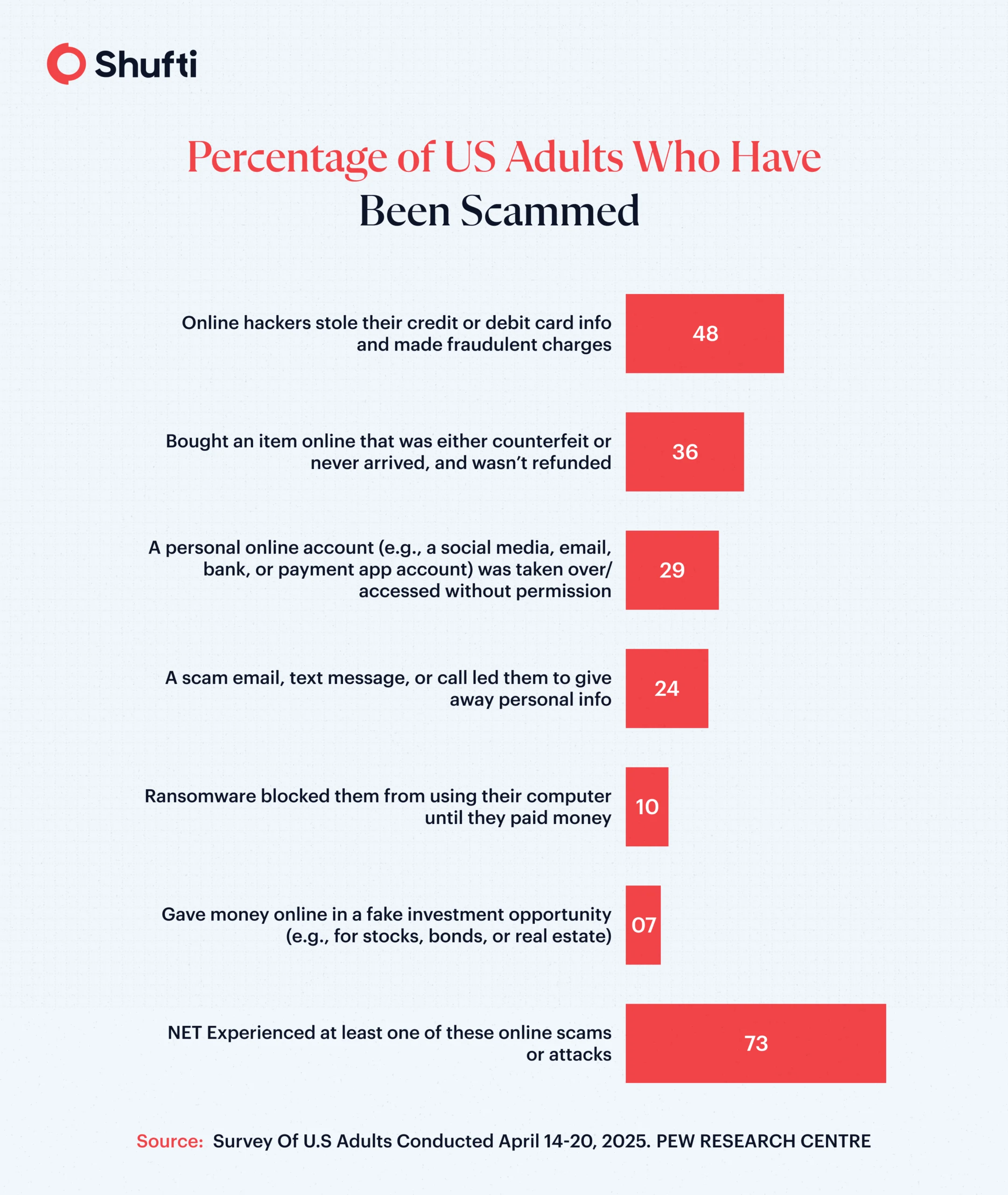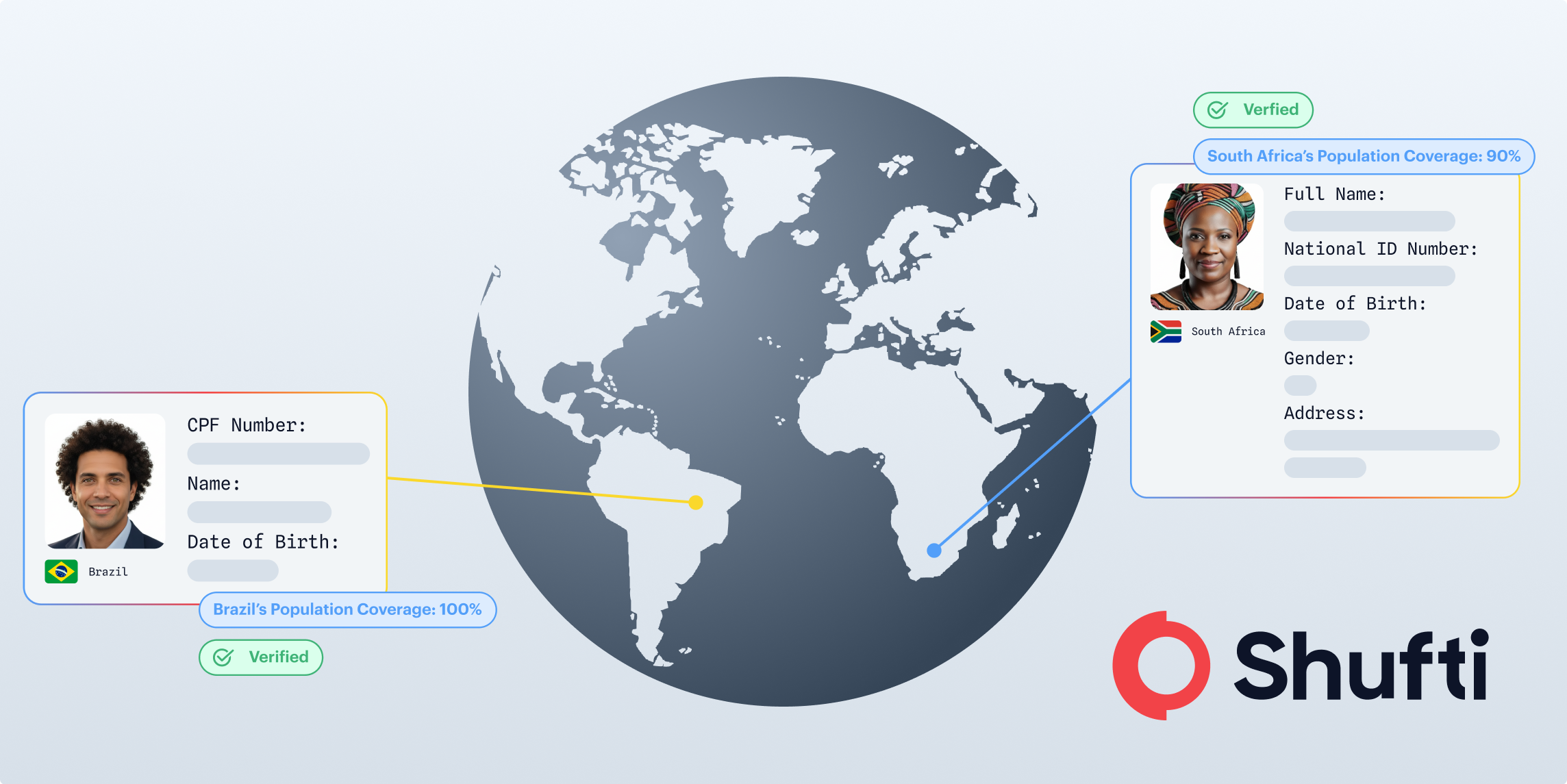How to Stay Safe From Holiday Scams in 2025

As December approaches and firms gear up for their busiest end-of-year period, fraudsters go into overdrive. From the frenzy of “Black Friday” and gift-giving to travel deals, holiday shopping scams, phishing campaigns, and identity theft, the risk of fraud significantly spikes.
For financial institutions, fintechs, e-commerce platforms, and any platform handling identity or online payment gateways, the 2025 holiday season adds new challenges to old threats, especially in cryptocurrency, AI, and social media.
To address these emerging challenges, fraud protection must evolve to mitigate these risks.
What is the Holiday Season?
The holiday season brings together some of the busiest shopping moments of the year, beginning with Black Friday and Cyber Monday and continuing through Christmas. Each of these periods attracts high purchasing activity, promotional campaigns, and elevated digital engagement, which creates ideal conditions for fraudsters to operate:
-
- Black Friday – fake discount codes or cloned storefronts are popular as Black Friday scams to take advantage of the increased shopping activity.
- Cyber Monday – fake tech deals (such as cheap phones or laptops), cloned websites, and deceptive online ad scams are common as Cyber Monday scams.
- Christmas – Christmas scams tend to lean towards gift card fraud, fraudulent charity appeals, and fake delivery notifications through text.
Since these events occur within a short window, fraud attempts often overlap, making it difficult for customers and businesses to distinguish real seasonal activity from manipulated or malicious behaviour. This concentration of spending and digital traffic is why the broader category of holiday scams continues to expand each year, and why institutions must strengthen their defences across the entire end-of-year cycle.
Why Holiday Scams Will Be More Dangerous in 2025:
What sets the 2025 Holiday Season apart is the rapid technological evolution of online shopping scams. AI-generated phishing attacks are now far more convincing, with fraudulent emails and fake websites almost indistinguishable from legitimate ones to many users.
Financial criminals routinely use advanced deepfake technology to impersonate popular figures (such as celebrities) who push fraudulent deals on social media platforms. Potential customers are then deceived into trusting such bogus offers, leading them to share personal information, make fraudulent payments, or purchase counterfeit products.
At the same time, crypto fraud has also gained traction, with fake NFT offers and exclusive crypto token deals targeting holiday shoppers eager for digital rewards.

Similarly, California’s Department of Financial Protection and Innovation (DFPI) recently stated that 2025’s holiday season is the “prime hunting ground” for bad actors, particularly for crypto and gift-card scams. In fact, the American Association of Retired Persons’ (AARP) 2025 Holiday Shopping and Scams Report reveals that 89% of U.S adults have experienced at least one scam between August 2024 and August 2025.
| “Criminals are relentless during the holidays, exploiting the many opportunities that come with a busy season – from shopping and travelling to charitable giving.”
Kathy Stokes Director of Fraud Prevention Programs, AARP Fraud Watch Networks |
With online shopping scams increasingly reliant on social media ads, fraudulent influencer endorsements, and even SMS phishing, consumers face an entirely new level of threat in the 2025 holiday season.
Holiday Shopping Scams to Watch Out for in 2025:
Below are the prominent categories of holiday scams, describing how they work, what’s changed this year, and what businesses can do to mitigate the risk of fraud:
-
Fake Online Stores and Too-Good-To-Be-True deals:
Scammers set up look-alike e-commerce websites that mimic well-established brands, clone their UIs, and run aggressive ads on social platforms with steep discounts to lure innocent holiday shoppers.
Typically, these websites offer exclusive deals that seem too good to be true, and attach a sense of urgency with “Black Friday only” or “Cyber Monday only” to convince the customer into making an impulsive purchase.
What’s new this year:
Advanced AI tools enable fraudsters to generate realistic site copies, fake reviews, and cloned brand pages far faster than before. The realistic nature of these bogus websites, coupled with the rate at which they are being created, poses a greater risk than before.
In fact, a recent report found a bulk of fake domain registrations, spoofed app pages, and paid placement in Google Ads that impersonate authentic discount communities.
What businesses should look out for:
- Unexpected surge of new domains pretending to be your brand or partner sites.
- Social media ads redirecting to non-official storefronts.
- Payment methods that require direct deposit, crypto, or gift card equivalents rather than standard card checkout.
-
Holiday Phishing Scams (Email, Text, Social Media):
Bad actors take advantage of the busy nature of the holiday season to send fraudulent emails and messages, impersonating individuals and entities that are trusted.
For instance, customers may receive a bogus email from Apple stating that they have won the new iPhone, which they will receive once they click on this link or attend this call.
The end goal of holiday phishing scams is always the same: to deceive the customer into giving sensitive personal information. A recent survey of 2000 American adults found that 82% of the respondents had been phished or had come dangerously close to it.
What’s new this year:
- AI-generated phishing messages can copy the grammar, style, and tone of the company they are impersonating – making it difficult to detect.
- Fake “delivery” or “shipping delay” SMS/links are tied to genuine gift purchases made by customers, leading them to believe the SMS/Link is about their genuine order.
- Bogus AI-generated social media messages can easily impersonate family members or trusted figures. Though less common, 45% of Americans exposed to such messages were successfully phished.
How to protect yourself:
- Establish anti-phishing training that goes beyond the age old-technique of email phishing. Instead, include training for social media messages and SMS to tackle these modern phishing attempts.
- Appropriately vet any marketing campaign or influencer-collab for authenticity.
- Monitor for brand-spoofing on social channels to protect customers and brand reputation.
-
Gift Card Scams:
Gift card scams remain among the most frequently abused instruments during the holiday season. The speed and anonymity of gift card scams allow fraudsters to manipulate customers into paying with gift cards.
Sometimes, bad actors may also create bogus websites on which you can buy “discounted gift cards” that turn out to be empty once purchased.
| “Criminals know gift cards are popular during the holiday season, and they are taking advantage of that.”
Phil Sorrels Tarrant County District Attorney |
What’s new this year:
Fraudsters have started to physically tamper with the barcodes of gift cards while they are still on the shelves. When a customer buys the gift card and activates it, scammers can drain the funds from the gift card before the customer can use it.
Measures to avoid gift card scams:
- Retailers must monitor gift-card inventory and ensure secure activation to avoid to tackle tampering attempts.
- Payment/fintech platforms should extend the same fraud-monitoring techniques used in credit card transactions to gift card top-ups.
- Businesses can remind customers to regularly check their card balance and avoid sharing the card PIN with anyone else.
-
Travel and Booking Scams
Fake travel portals and fraudulent booking offers become common during the holiday season. Travelling customers are exposed to false hotel listings, rentals, or even seasonal travel packages as fraudsters exploit the rush of holiday planning.
What’s new this year:
The advancement in generative AI has resulted in fake travel portals that are difficult to distinguish from legitimate portals, which collect identity data and payment credentials from innocent customers.
What can businesses do to avoid travel scams?
- Verify new travel-industry partners through strong KYB checks
- Encourage use of official or verified travel-booking sites
- Review transaction-pattern anomalies tied to seasonal travel purchases.
| “Just as regular consumers are excited for shopping season, scammers are also excited, because it gives them opportunities to capitalize on these feelings, and illicitly gather payment data, or other personal information from unsuspecting victims,”
Michael Jabbara, Global head of fraud services at Visa, via CBS News. |
-
Crypto-Holiday Scams and Digital Token Promotions:
Crypto-related holiday scams are on the rise as fraudsters create seasonal token promotions, fake non-fungible tokens (NFTs), or crypto-based “holiday rewards” to entice buyers. These scams often promise bonus tokens or discounted rates for paying in cryptocurrency.
How this scam is evolving in 2025:
Scammers exploit the limited consumer protection around digital assets. Holiday-themed tokens, social-media airdrops, and fake investment schemes emerge each year, and 2025 is showing an upward rise in social channels.
What institutions can do:
- Apply enhanced due diligence checks on any vendor or partner offering crypto-based incentives.
- Monitor customer-facing channels for misleading crypto-related holiday offers.
- Encourage customers to research any crypto promotion before sending funds.
-
Deep Fakes and Social Media Influencer Scams:
Deepfake technology is transforming holiday scams by enabling fraudsters to impersonate celebrities, influencers, or even company representatives. Fake endorsements or holiday “giveaways” circulate widely and appear authentic at first glance.
How this scam is evolving in 2025:
AI-crafted videos and cloned voices make fraudulent social-media posts far more convincing. Customers often trust endorsements without verifying whether the influencer actually posted the promo.
What can institutions do:
- Conduct routine checks for influencer or brand impersonation across social channels.
- Advise customers to validate promotions through verified accounts.
- Strengthen internal processes for approving any legitimate influencer partnerships

A Practical Checklist for Holiday Fraud Protection:
To protect themselves during this Holiday season, businesses need to rely on a structured fraud-prevention checklist that supports safer onboarding, transactions, and digital interactions:
- Validate new domains or storefronts mimicking brand identity.
- Strengthen monitoring around high-risk payment flows, including gift cards and crypto.
- Apply reliable KYC/KYB checks for new vendors, merchants, and seasonal partners.
- Increase vigilance regarding social media activity and impersonation attempts.
- Provide clear holiday-scam education to customers and staff.
- Add friction for high-velocity or unusual holiday-period transactions.
- Track anomalies such as spikes in new vendor sign-ups or refund requests.
- Ensure incident-response teams have defined escalation paths during peak volume.
How Holiday Scams Lead to Identity Theft?
Unfortunately, holiday scams cause more damage than short-term payment losses. Almost all forms of scams that are rampant during the holiday season expose sensitive personal information of the customer. Fake storefronts, compromised travel portals, and phishing campaigns all collect sensitive data that can later be used for account takeover or credential fraud.
Platforms that handle onboarding or recurring customer verification must therefore consider identity theft as an extended risk connected to holiday scams. Strong identity verification, behavioural analysis tools, and device intelligence safeguards help reduce exposure to identity-fraud incidents long after the holiday season ends.
Protecting Businesses From Holiday Fraud in 2025
Businesses preparing for the holiday rush face higher exposure to fake storefronts, holiday phishing scams, deceptive digital promotions, and identity theft attempts. These risks rise sharply during seasonal peaks when fraud blends into legitimate customer traffic.
Shufti helps firms strengthen their holiday fraud defences through a unified approach that brings together KYC, KYB, biometric verification, AML screening, device and behavioural intelligence, and ongoing risk assessment. This gives businesses the ability to identify suspicious activity early, validate genuine customers quickly, and reduce the likelihood of scams spreading through fake accounts, fraudulent transactions, or impersonation attempts.
Businesses that expect higher transaction volumes and fraud attempts in 2025 can request a demo to explore how Shufti supports safer holiday operations.










